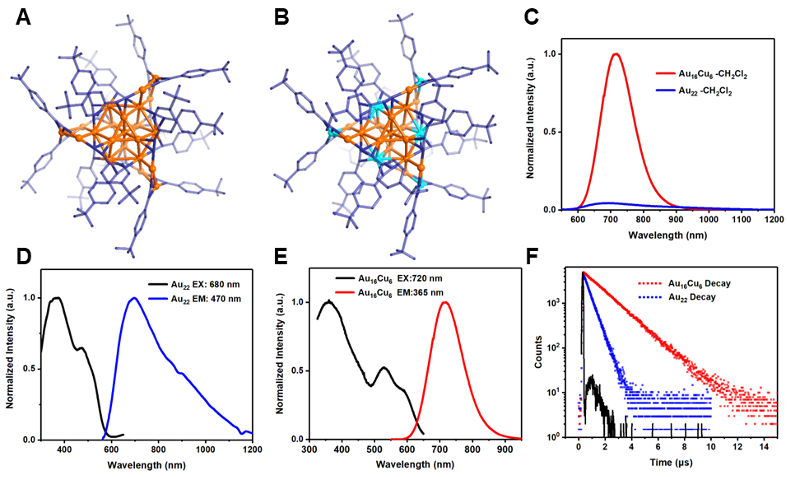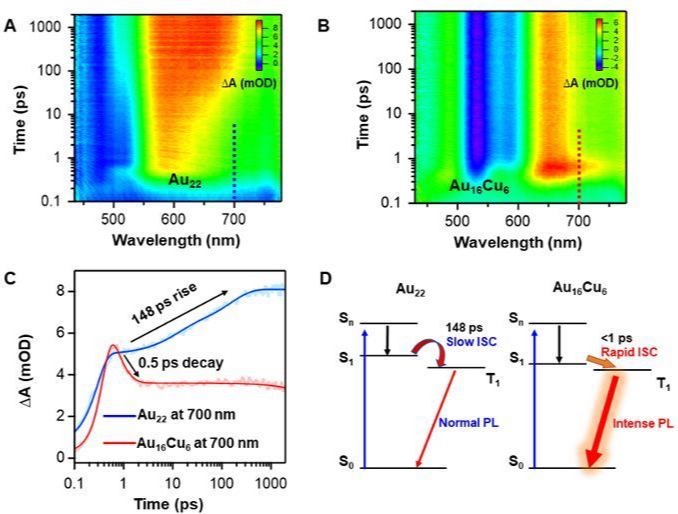Prof. Wang Quanming's team from the Department of Chemistry achieved a breakthrough in the near-infrared luminescence of metal nanoclusters, paving the way for bioimaging and optical communication applications.

Metal nanoclusters have emerged as promising near-infrared (NIR)–emissive materials, but their room-temperature photoluminescence quantum yield (PLQY), especially in solution, is often low (<10%). Prof. Wang Quanming's team studied the photophysics of Au22(tBuPhC≡C)18 (Au22) and its alloy counterpart Au16Cu6(tBuPhC≡C)18 (Au16Cu6) (where tBu is tert-butyl and Ph is phenyl) and found that copper (Cu) doping suppressed the nonradiative decay (~60-fold less) and promoted intersystem crossing rate (~300-fold higher). The Au16Cu6 nanocluster exhibited >99% PLQY in deaerated solution at room temperature with an emission maximum at 720 nanometers tailing to 950 nanometers and 61% PLQY in the oxygen-saturated solution. The approach to achieve near-unity PLQY could enable the development of highly emissive metal cluster materials.
